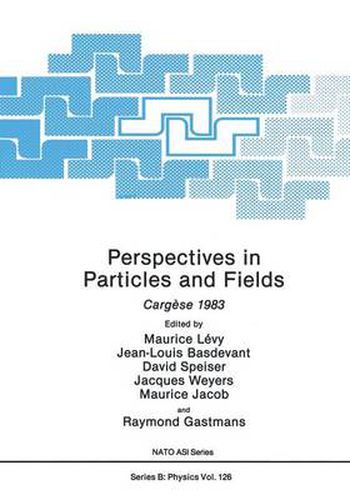Readings Newsletter
Become a Readings Member to make your shopping experience even easier.
Sign in or sign up for free!
You’re not far away from qualifying for FREE standard shipping within Australia
You’ve qualified for FREE standard shipping within Australia
The cart is loading…






This title is printed to order. This book may have been self-published. If so, we cannot guarantee the quality of the content. In the main most books will have gone through the editing process however some may not. We therefore suggest that you be aware of this before ordering this book. If in doubt check either the author or publisher’s details as we are unable to accept any returns unless they are faulty. Please contact us if you have any questions.
The 1983 Cargese Summer Institute on Particles and Fields was organized by the Universite Pierre et Marie Curie, Paris (M. LEVY and J.-L. BASDEVANT), C.E.R.N. (M. JACOB), the Universite Catholique de Louvain (D. SPEISER and J. WEYERS), and the Katholieke Universiteit Leuven (R. GASTMANS). After 1975, 1977, 1979, and 1981, it was the fifth time they joined their efforts for organizing this Summer Insti- tute. This school was characterized by simultaneous progress in the theory of elementary particles and by impressive experimental advances. On the theoretical front, one witnessed the new developments in lattice gauge theories, which explore the world of strongly interacting par- ticles in a non-perturbative way, and progress in a better understan- ding of the unity of all interactions based on supersymmetry. The experimentalists were ~roud to announce the discovery of the interme- diate vector bosons; W- and ZO, at C.E.R.N., while physicists working with e+e- colliding beams continued to probe more deeply the validity of the theoretical models of strong, weak and electromagnetic inter- actions. We owe many thanks to all those who have made this Summer Insti- tute possible! Thanks are due to the Scientific Committee of NATO and its Presi- dent for a generous grant and especially to the head of the Advanced Study Institute Program and his collaborators for their constant help and encouragement. We also thank the National Science Foundation (USA) for their financial assistance.
$9.00 standard shipping within Australia
FREE standard shipping within Australia for orders over $100.00
Express & International shipping calculated at checkout
This title is printed to order. This book may have been self-published. If so, we cannot guarantee the quality of the content. In the main most books will have gone through the editing process however some may not. We therefore suggest that you be aware of this before ordering this book. If in doubt check either the author or publisher’s details as we are unable to accept any returns unless they are faulty. Please contact us if you have any questions.
The 1983 Cargese Summer Institute on Particles and Fields was organized by the Universite Pierre et Marie Curie, Paris (M. LEVY and J.-L. BASDEVANT), C.E.R.N. (M. JACOB), the Universite Catholique de Louvain (D. SPEISER and J. WEYERS), and the Katholieke Universiteit Leuven (R. GASTMANS). After 1975, 1977, 1979, and 1981, it was the fifth time they joined their efforts for organizing this Summer Insti- tute. This school was characterized by simultaneous progress in the theory of elementary particles and by impressive experimental advances. On the theoretical front, one witnessed the new developments in lattice gauge theories, which explore the world of strongly interacting par- ticles in a non-perturbative way, and progress in a better understan- ding of the unity of all interactions based on supersymmetry. The experimentalists were ~roud to announce the discovery of the interme- diate vector bosons; W- and ZO, at C.E.R.N., while physicists working with e+e- colliding beams continued to probe more deeply the validity of the theoretical models of strong, weak and electromagnetic inter- actions. We owe many thanks to all those who have made this Summer Insti- tute possible! Thanks are due to the Scientific Committee of NATO and its Presi- dent for a generous grant and especially to the head of the Advanced Study Institute Program and his collaborators for their constant help and encouragement. We also thank the National Science Foundation (USA) for their financial assistance.